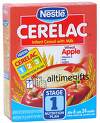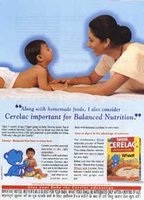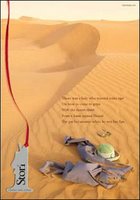Brand : Coffy Bite
Company: Lotte India
Agency: JWT
Company: Lotte India
Agency: JWT
Brand Count : 137
Coffy Bite is a power brand in the Rs 1500 crore Indian Sugar Boiled Candy market.This 100 crore brand has a history of 18 years of existence.

Coffy Bite is one of the brands which I grow up with. The brand is unique and its positioning and ad campaign was one of the best in that era. The brand is in the coffee category which is around 15% of the Sugar boiled candy category. Coffee Bite have around 9 % market share in the SBC segment.
Coffee Bite was introduced in India by Parry's confectioneries of the Muruggappa Group. This was the flagship brand of Parrys. Later in 2004 , Parry's confectioneries was sold to The Lotte group.
Coffee Bite is famous for the " Coffee -Toffee " argument followed by the tagline " Its a Coffee in a Toffee" . All th
 e campaigns of this brand was a fun to watch and as a product, the brand offered excellent taste and quality. Overall this product was a winner. The brand enjoys a recall of as high as 85%.
e campaigns of this brand was a fun to watch and as a product, the brand offered excellent taste and quality. Overall this product was a winner. The brand enjoys a recall of as high as 85%.With the entry of Big names like Perfette, Parrys faced intense competition in the market for all its major brands. Along with this heat, the company faced pressures in pricing coupled with rising raw material costs. Infact, these issues are still haunting the confectionery manufacturers.
The candy market is faced with two marketing issues
a. The product: since the product is purely an impulse product, lot of money has to be spent on the brand and also on developing new variants to create and sustain excitement.
b. The Price: The consumers in this segment is price conscious. Because of the competition, companies cannot afford to price the product at a premium and renounce volume. With the 50 paise price point becoming the industry norm, most of the companies are facing profitability issues.
The problem that Coffy Bite faced was again the issue of relevance. Because of some reasons, the brand missed the new generation. The brand was perceived to be " Old". Hence even though the recall was high, the actual purchase was as low as 20%.
The task for the new brand owners "Lotte" was to make the brand more relevant to the new generation. By New Generation , I mean those kids born after1990's : the liberalisation child.
Lotte changed the packaging to make the brand more contemporary and youthful. The communication also was changed. Thank God, the brand managers did not change the famous " Argument". So the argument continues. The new baseline is " Enough to start an argument" was an unnecessary change for this brand which is famous for its " Coffee in a toffee" baseline. The brand owners has to think as to who is bored by the old baseline, company or customer? As a customer I prefer the old one. I think that the brand need not change the taglines and positioning to become more relevant.
Since the category is Coffee, you cannot have any other taste, that can give some consistency to the communication.I hope the owners will not come up with variants like Pineapple coffy bite. Besides the taste, the "Coffee -Toffee" argument gives the creative guys lot of things to work with.I feel that this brand should take the " Topical" advertisement route perfected by Amul( discussed somewhere in my blog) which will be enjoyed by all. One more major positive for this brand is that it is more of a family toffee that gives it a huge market to tap.
Coffy Bite is a brand that has a unique space in the mind of the customers. Is it a Coffee or a Toffee.. the argument continues.
Source: Businessline, agencyfaqs,fnbnews.com, lotteindia.com,economictimes.com









